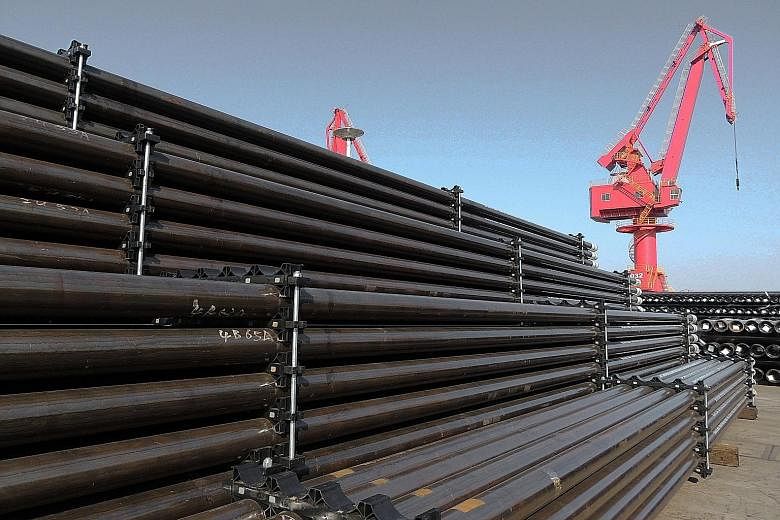Economic growth this year may come in even lower than the already lacklustre official forecast amid the persistent slowdown in China, according to a UBS banker yesterday.
Ms Tan Min Lan, who heads the Apac investment office, added that there will be little uplift next year with rising interest rates crimping consumption demand.
The better-than-expected performance of Singapore's services sector has been a bright spot, but manufacturing and exports are still struggling, she said at the bank's outlook briefing for next year yesterday.
"If you look at the high frequency data - such as purchasing managers' index, non-oil domestic exports and loans - it all points to rather recessionary conditions.
"For the full year, GDP (gross domestic product) growth should come in at just under 2 per cent, and it will remain roughly unchanged next year. While we do expect the global trade to rebound somewhat, domestic investment and consumption landscape will be more challenged because of higher interest rates."
Singapore's interest rates have been going up ahead of the impending increases in the United States, which UBS expects to start this month and to rise by 25 basis points per quarter next year.
But the more immediate challenge is the faltering manufacturing sector, part of the reason why the Ministry of Trade and Industry narrowed its growth forecast for this year from the 2 per cent to 2.5 per cent range to "close to 2 per cent" last month.
Ms Tan's caution seems warranted as last month's Purchasing Managers' Index (PMI) figures released yesterday showed that manufacturing activity contracted for the fifth straight month.
Head of Asia Country Risk Research at BMI, Andrew Wood, was also not optimistic.
"We see little prospect for a significant recovery in Singapore's export growth over the coming year amid poor external demand conditions and ongoing domestic structural difficulties," he said in a note yesterday.
"In line with our expectations for lacklustre real export growth of 2.2 per cent in 2016, we have downgraded our 2015 real GDP forecast to 2.3 per cent from 2.5 per cent previously."
Tepid growth here reflects the Asiawide slowdown resulting from headwinds in China.
"Asia's growth is currently running at 15-year low. This year, Asia ex-Japan growth will be about 6 per cent, next year it will slow to about 5.8 per cent," said Ms Tan.
This is mainly because China's growth will slow down towards the 6.2 per cent to 6.5 per cent range, she added.
Still, there are positive takeaways from the mixed backdrop. The growth momentum in China's services sector remains strong even as industrial and manufacturing struggle, Ms Tan said, adding that the same transformation is also visible in other countries including Singapore.
"If we were in the 1990s, Singapore's growth would be minus 5 per cent with exports as weak as they are. The fact that we're actually growing 2 per cent today is quite the testament that there's a real transition happening in the services side of economy."
Meanwhile, there are also growth opportunities for investors. UBS is overweight on China and Singapore equities next year.
"The market has corrected... Earnings growth will be about plus 5 per cent next year from about 2.5 per cent this year.
"At current levels, there is value in the market for longer-term investments. We like the defensive sectors, and transport is our biggest overweight sector," Ms Tan said, noting that the operators will benefit from new rail financing arrangements currently explored by the government.
NOTE: An earlier version of this story wrongly credited Chua han Teng as the author of a note on Singapore's export growth. We are sorry for the error.



